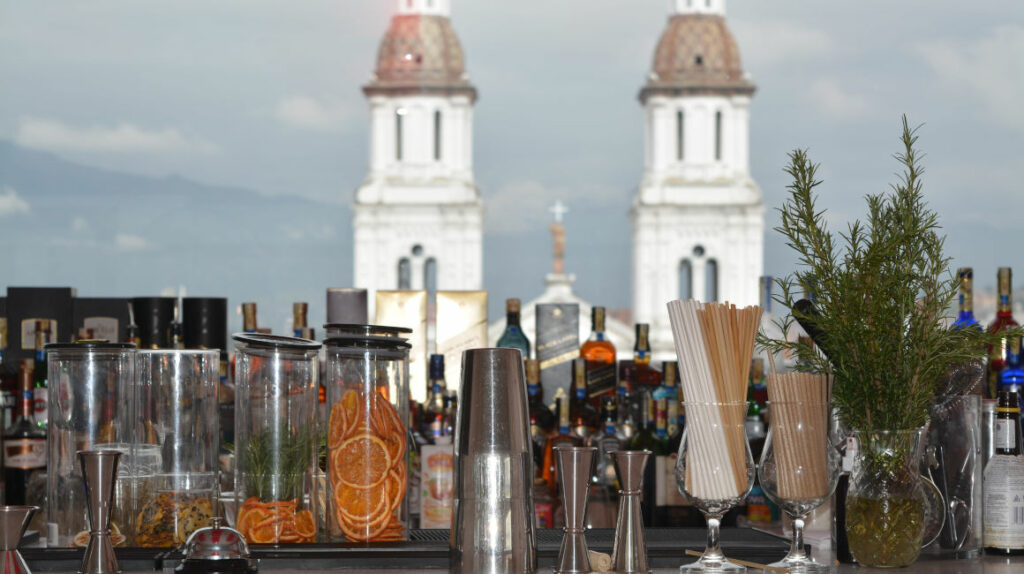The restoration of heritage houses is booming in the Historic Center of Cuenca. Buildings from more than a century ago have become modern hotels, restaurants and terraces that are committed to the city’s tourist development.
Investments are in the millions and the recovery work on the houses is meticulous.
This is the case of the Itza Hotel Boutique International, which opened its doors in March 2022, after more than five years of restoration.
Its owner is Maritza Yumbla, an Azuay emigrant who lives in Canada. She acquired the building from the Peña family and allocated approximately $1.2 million for its renovation.
This building, located on Gran Colombia and Benigno Malo streets, one block from Parque Abdón Calderón, dates from 1930. It combines the characteristics of French and Italian architecture that were common in important houses in Cuenca at that time.
Yumbla, who is a businesswoman in the hotel sector in Canada, decided to invest in Cuenca because of the potential of a city declared Cultural Heritage of Humanity, but which “lacked more tourist infrastructure,” says the administrator of the Itza hotel.
The investor brought together a group of local architects, craftsmen, artists and technicians in different specialties to shape this project. In charge of the restoration were the architects Alfredo Ordóñez Castro and Fabián Orellana Serrano.
The hotel has 15 luxury rooms, a restaurant and a meeting room with a bar on the ground floor. But the biggest attraction is its rooftop or terrace bar, which offers a panoramic view of the city.
The rooftop trend
In the midst of a pandemic, the trend of bars and restaurants that, in addition to their menu, offer spectacular views of the city was launched in Cuenca. This is also the case of Negroni and Madame, both located around Parque Calderón.
Negroni is a project of the tourism entrepreneur Juan Pablo Vintimilla. It is located in the Jerves Calero mansion, built in 1917. Since February 2021 this space is the first proper rooftop in the center of Cuenca.
Negroni Rooftop offers international cuisine and signature cocktails with a view from above of the main architectural symbol of Cuenca: the Cathedral of the Immaculate.
Madame is a lounge bar located on the second floor of a typically French-style house that dates back to 1920 and belongs to the Arce family. It was inaugurated in September 2021 and is managed by Christian Muñoz and Javier Baculima.
Muñoz was in charge of the remodeling, when the owner of the house proposed that he take charge of the space. He partnered with Baculima and together they designed the proposal.
“The idea is to keep the house as such, to be like a living museum and for people to see what life was like at that time,” says Muñoz.
The house has not had major changes done to it and maintains the maximalist atmosphere of the time, with furniture and decoration that recall those years. In addition, it takes advantage of the balconies that overlook the central streets of the city to offer diners a different experience.
In the same area, there is Casa Firenza, located on Bolívar Street, which plans to open its doors next May. The investment for its acquisition and restoration is close to $4,000,000.
The building has three floors. On the first floor there will be food establishments, on the second, a hotel with eight rooms and the third floor will have a rooftop on two levels with an attractive view of the Cathedral of Cuenca.
“The restoration and readjustment of the house rescues all the vernacular construction systems typical of our architectural identity,” explains Paúl Vázquez, who is in charge of the project.
The house—without cladding—shows the ancient construction materials and techniques of the Azuay capital, such as adobe, plaster, brick, tile, wood and reed.
The style of this building combines the restored elements with a new concept of architecture, explains Vázquez. For example, it maintains the neoclassical-style French brass ceilings, which contrast with materials such as acrylic, glass and iron.
“This is a restoration trend that is widely used in European cities and that is being applied for the first time in our Historic Center,” explained the architect.
There is another project underway in a heritage home located on Bolívar and Tarqui streets, diagonal to the Cenacle church, with an investment of close to $2.8 million. Its owner is Samuel Morocho, an Ecuadorian emigrant who is a chef in the United States.
The renovation is still underway and will take at least another year. So far, some heritage elements that were in poor condition have been rescued.
This building will become a boutique hotel and cafeteria, which Morocho hopes to manage at some point. With this project, he and his family want to “’contribute to the reactivation of the city’s economy.”
These spaces have diversified the hotel and gastronomy offerings in Cuenca, explains the executive director of the Municipal Tourism Foundation for Cuenca, María Angélica León.
“This new dynamic of tourism in recovered heritage buildings strengthens the economic activity of the destination, as it generates jobs in sectors such as construction, decoration, hotels, agriculture, catering and other value chains,” she adds.
León says that the buildings also become a great tourist attraction “because in addition to offering delicious cuisine and drinks, they turn out to be fantastic settings for photos, videos, film shoots, video clips and above all, to appreciate why Cuenca is called the red city, thanks to its tile roofs.”


0 Comments